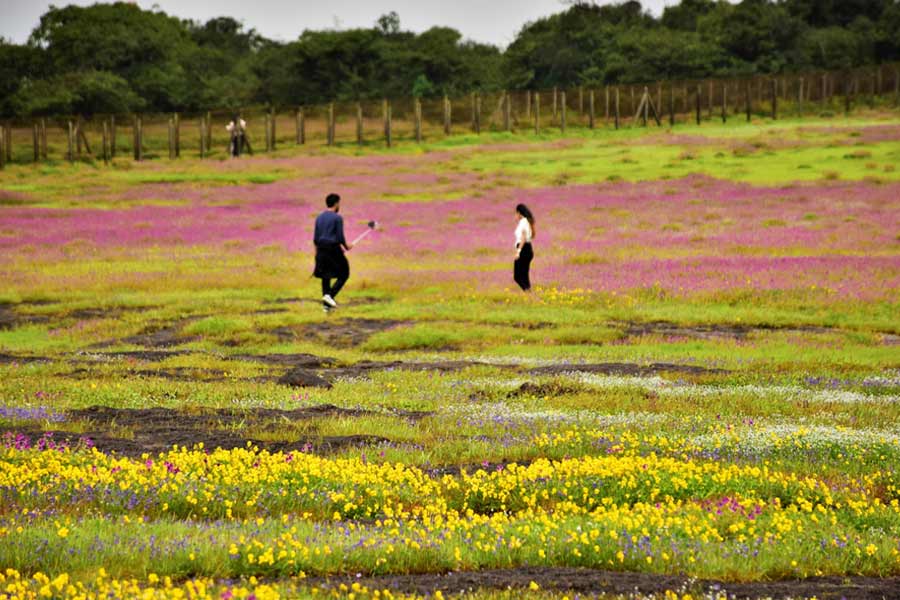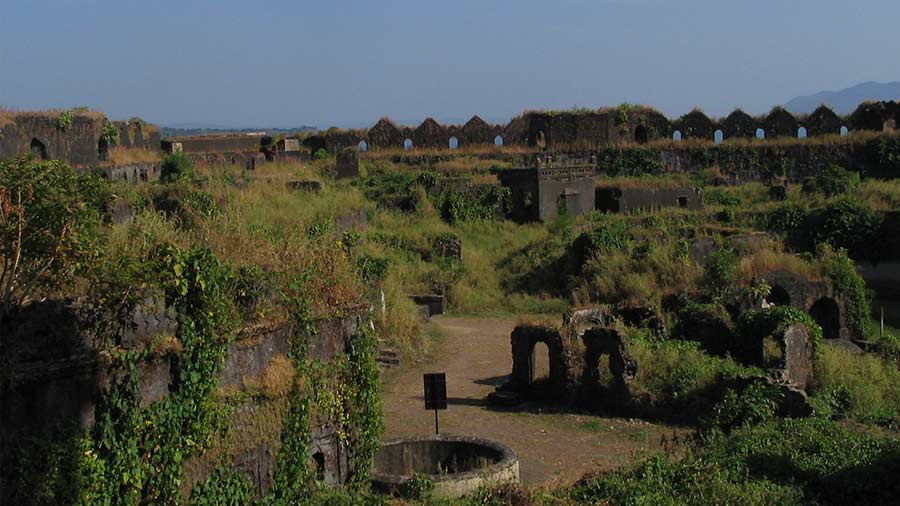The allure of unspoiled nature has always held a powerful grip on my imagination. I was instantly captivated when I stumbled upon images of the Kaas Plateau, a UNESCO World Heritage Site in Maharashtra known for its vibrant carpet of wildflowers. The prospect of escaping urban chaos and immersing myself in nature was too enticing to resist. So, with excitement and anticipation, I packed my bags and embarked on a journey to this floral wonderland.
Kaas Plateau, also called the Valley of Flowers of Maharashtra, is about 25 km from Satara. Every year, the valley bursts into bloom between September and October. With a stunning array of more than 850 species of wildflowers spread over 1,000 hectares, this natural masterpiece has travellers and photographers coming to visit from far and wide.
The journey
My trip started from Pune, about three hours by road from the Kaas Plateau. After navigating the unending lines of vehicles, I was happy to escape the hustle and bustle of the city and get lost in nature and all its wonders.

In June 2012, UNESCO declared the Kaas Plateau a Biodiversity World Heritage Site Dhananjay Dravid
As we ascended the plateau, the landscape suddenly transformed from lush green valleys to a patchwork of colours, where wildflowers dotted the landscape like stars decorating a night sky. The sight was so mesmerising that I captured its beauty in a frenzy of clicks. Little did I know that this was just the prelude to the extraordinary experiences that lay ahead.
Kaleidoscope of colour
In June 2012, UNESCO declared the Kaas Plateau a Biodiversity World Heritage Site. Every year, just as the monsoon ends, the valley comes alive with wildflowers. From the wild Drosera Indica (Indian sundew) to the dainty orchids, the entire plateau is studded with millions of tiny flowers, laying out a carpet of colours — purple, blue, pink, and yellow.

A sea of yellow blooms at Kaas Shutterstock
As I explored the plateau, I was captivated by the sheer variety of wildflowers. The magnificent sunburst of yellow daisies was particularly striking. The pink-flowering balsam, with its delicate petals, was my favourite. Its vivid colour stood out against the backdrop of green hills, azure skies, and lush meadows. As I wandered around, I encountered a myriad of other blooms — fragrant lilies with their trumpet-shaped blooms, the wild brinjal flower, the Grass Leaved Bladderwort, which is a small, aquatic plant that thrives in the marshy areas of Kaas Plateau — all adding to the spectacular riot of colours.
One of the most elusive and sought-after flowers of the Kaas Plateau is the Strobilanthes sessilis, popularly known as topli karvi in Marathi. This rare wildflower blooms once in seven years, and its appearance is a cause for celebration among locals and visitors alike. Though I missed seeing the bloom during my visit, I could imagine this botanical treasure transforming the meadows into a sea of purple.

The Strobilanthes sessilis, popularly known as topli karvi, which blooms every seven years and (right) the Angled Pierrot butterfly at Kaas Shutterstock
Besides the stunning flowers, Kaas is also a haven for wildlife, teeming with butterflies, birds, some wild animals, and reptiles. As I explored the vibrant meadows, I was delighted to spot beautiful butterflies with their delicate wings and intricate patterns fluttering from flower to flower, creating a sight to behold.
Beyond Kaas
While the valley of flowers is the main reason to make this trip, there is more to explore nearby, and with enough time on my hands, I decided to spend a day doing just that.
About two hours by road from Kaas Plateau is Koyna Wildlife Sanctuary — another must-visit spot for nature lovers. The sanctuary boasts an abundance of flora and fauna, including innumerable birds, deer, leopards, and many other species. I went on a guided nature trail to explore the depths of the sanctuary. We spotted many different birds, including the Malabar Pied Hornbill, the Indian Roller, and the Crimson-breasted Barbet, to name a few.

A view of Koyna Lake Dhananjay Dravid
About 18km from the plateau is Koyna Lake, a picturesque setting with forest-covered hills surrounding the reservoir within a reserve forest. I walked around the lake and then took a leisurely boat ride. Gliding across the water, I got a whiff of the sweet fragrance of the wildflowers of Kaas. The stillness of the lake was only occasionally broken by the distant sound of birdsong, the gentle lapping of waves against the shore, or birds diving into the crystal-clear waters teeming with fish.
After this relaxing boat ride, it was time for another adventure — a trek to the majestic Sajjangad Fort, about an hour’s drive from Kaas Plateau. Built between 1347 and 1527, the fort was under Mughal rulers before Chhatrapati Shivaji Maharaj conquered it. The fort’s walls are still intact, and a few old structures offer a glimpse into its past. The climb to the fort is a bit challenging, but the view from the top makes it well worth the effort as you get a breathtaking panorama of the blooms of Kaas, the shimmering waters of Koyna Lake, and the distant hills.

The way up to Sajjangad Fort, and (right) the Shivaji Mahadarwaja entrace of the fort Shutterstock
My trip to Kaas Plateau was one-of-a-kind, where nature blended beautifully with history. The vibrant wildflowers, the serene Koyna Lake, and the ancient Sajjangad Fort created a truly unforgettable experience.
Travel details
How to reach: Kaas Plateau is a 3-hour drive from Pune and 5-hour drive from Mumbai
Places to stay: The MTDC-approved Kaas Village Resort, the Vayu Resort, and Rockhill Resort make for affordable yet comfortable places to spend the night.
Tickets: Rs 150 per person. There is a restriction on the number of people allowed to visit at a time, so make sure you book tickets in advance. You can buy tickets here.


